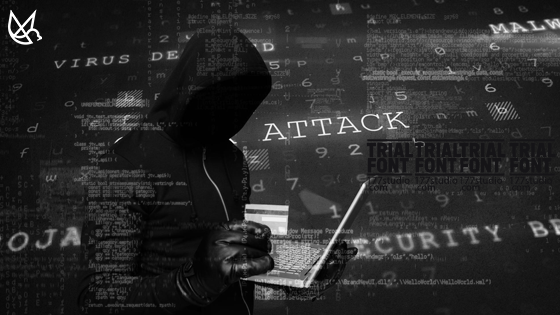As we step into 2025, cybersecurity trends will continue to evolve and advance as cyber threats become increasingly sophisticated. Businesses, governments, and individuals are trying to stay ahead of the curve to reduce risks and protect sensitive data. With the rise of top cybersecurity trends like AI and ML, cybersecurity is becoming more critical daily.
In this blog, we will explore the top cybersecurity trends of 2025, their impact on businesses and individuals, and how organizations can strengthen their defenses against emerging threats.
1. The Rise of AI-Powered Cybersecurity
Artificial Intelligence (AI) is among the top cybersecurity trends of 2025. With the increasing complexity and frequency of cyber threats, traditional security measures are no longer sufficient. AI has emerged as a powerful tool, helping organizations detect and prevent cyberattacks more effectively than ever before. However, while AI significantly strengthens cybersecurity defenses, cybercriminals are also harnessing the power of AI to develop more innovative and evasive attacks. AI has become both a defensive tool and a potential weapon for hackers making it a critical area of focus in modern cybersecurity.
AI in Threat Detection and Response
One of the primary reasons AI has gained such prominence in cybersecurity is its ability to process and analyze vast amounts of data in real time. Unlike traditional security systems that rely on fewer predefined rules, AI employs machine learning (ML) algorithms to detect patterns, anomalies, and irregular behaviors, allowing it to identify potential threats before they can cause harm.
Another significant advantage of AI is its ability to identify zero-day vulnerabilities. This is a new and unknown security mistake that cybercriminals exploit before a patch is available. Traditional security systems struggle to detect zero-day attacks because they rely on known threat signatures. However, AI-driven systems analyze behavioral patterns and detect deviations that may indicate an emerging attack, providing organizations with a proactive defense mechanism.
AI has also revolutionized endpoint security, which involves protecting individual devices such as computers, mobile phones, and IoT devices. AI-powered Endpoint Detection and EDR solutions monitor endpoint activity and detect suspicious behavior in real time. If an endpoint device suddenly connects to a malicious website or downloads a suspicious file, the AI system can immediately isolate the device, preventing malware from spreading across the network. This rapid response capability is crucial in minimizing the impact of cyberattacks.
Furthermore, AI enhances the efficiency of Security Operations Centers (SOCs), which are responsible for monitoring and responding to cyber threats. Security teams are often loaded with a high volume of security alerts, many of which turn out to be false positives. AI helps prioritize these alerts by distinguishing between real threats and harmless anomalies, ensuring that security analysts focus on the most critical incidents. This improves response times and prevents security teams from wasting valuable resources and time on insignificant alerts.
Machine Learning-Driven Automated Security Solutions
Beyond just detecting threats, AI also plays a crucial role in automating security responses, significantly reducing the time required to mitigate cyber risks. Traditional cybersecurity measures often rely on manual intervention, where security teams analyze the threats and then decide on the appropriate course of action. However, with AI-driven automation, security incidents can be handled in real time without requiring any human intervention.
One of the most powerful AI-driven solutions in cybersecurity is Security Orchestration, Automation, and Response (SOAR). SOAR platforms use AI to automatically respond to cyber threats by taking actions such as isolating compromised systems, blocking suspicious IP addresses, and deploying security patches within seconds.
Risks of AI Being Used in Cyberattacks
While AI is a powerful tool for defending against cyber threats, it is also being exploited by hackers to develop more advanced and harder-to-detect attacks. This has created a new wave of AI-driven cyber threats, making cybersecurity an ongoing battle between defenders and attackers.
One of the most alarming uses of AI by cybercriminals is in deepfake phishing attacks. Deepfakes use AI to generate highly realistic fake images, videos, and voice recordings, making it increasingly difficult to distinguish between real and fake content. Hackers can impersonate high-profile individuals, such as company executives or government officials, to manipulate employees into disclosing sensitive information.
AI is also being used to automate malware attacks, allowing hackers to launch cyberattacks on a massive scale. AI-powered bots can scan thousands of systems for vulnerabilities, exploit security gaps, and deploy malware automatically.
Another cyber attack with AI is the adversarial AI, where cybercriminals manipulate AI models to bypass security defenses. AI-based security systems rely on vast amounts of data to make decisions. However, attackers can feed false or misleading data into AI models, causing them to misclassify threats or ignore real attacks. This technique is particularly dangerous in areas like facial recognition security, where adversarial AI can trick systems into granting unauthorized access.
2. Zero Trust Architecture Becomes the Standard
Zero Trust Architecture has emerged as the foundation of modern cybersecurity, replacing traditional security models. With remote work and cloud computing becoming the norm, organizations can no longer assume that everything within their internal network is secure. The Zero Trust approach operates on the principle of “never trust, always verify,” meaning that every user, device, and application must continuously authenticate and prove their legitimacy before accessing sensitive systems or data. This model ensures that security is maintained at all times, preventing unauthorized access and minimizing potential breaches.
Importance of a “Never Trust, Always Verify” Approach
The shift to Zero Trust is essential because traditional security models relied on the assumption that threats existed outside the corporate network, while everything inside was inherently safe. However, with cyber threats becoming more sophisticated and organizations adopting remote work, third-party integrations, and cloud-based solutions, these older models have become obsolete. Zero Trust enforces Multi-Factor Authentication to ensure that users verify their identity using multiple methods before gaining access. It also applies least privilege access, granting employees only the permissions they need to perform their tasks, thereby reducing the risk of insider threats. Additionally, continuous monitoring plays a key role in detecting unauthorized activity, identifying anomalies, and taking proactive measures against potential cyberattacks. Another critical component of Zero Trust is micro-segmentation, which restricts access to only necessary resources, preventing attackers from moving freely within the network in case of a breach.
How Organizations Are Implementing Zero Trust
Organizations are implementing Zero Trust in various ways to enhance security across their infrastructure. Many companies are adopting Zero Trust Network Access to protect remote workers, ensuring that employees can securely access corporate applications and data from anywhere without exposing the entire network. Security teams are also leveraging Identity and Access Management solutions to enforce strict authentication policies, making sure that only authorized users can interact with critical systems. Furthermore, cloud security solutions play a crucial role in extending Zero Trust principles to hybrid and multi-cloud environments, ensuring robust access control and data protection across diverse platforms. By integrating these strategies, organizations are strengthening their security posture and effectively mitigating the risks associated with modern cyber threats.
3. Increasing Sophistication of Ransomware Attacks
Ransomware attacks have evolved into one of the most pressing cybersecurity threats, affecting businesses, governments, and individuals alike. Cybercriminals have become more sophisticated, developing Ransomware-as-a-Service models and employing double extortion tactics to maximize their impact. Unlike traditional ransomware, which primarily involved encrypting files and demanding payment, modern ransomware attacks are far more dangerous, often targeting entire networks, stealing sensitive data, and threatening to expose it unless a ransom is paid. These attacks are particularly devastating for industries such as healthcare, finance, and critical infrastructure, where data security is crucial.
Growth of Ransomware-as-a-Service (RaaS)
Ransomware-as-a-service has made ransomware attacks more accessible to a wider range of cybercriminals, even those with little to no technical expertise. This model functions similarly to legitimate software-as-a-service platforms, where ransomware developers provide ready-made ransomware kits to partners in exchange for a percentage of the ransom payments. This “pay-to-use” model has led to a dramatic increase in ransomware attacks because it removes the need for cybercriminals to develop their own malware. Instead, they can simply subscribe to a RaaS platform and launch attacks with minimal effort.
What makes RaaS particularly concerning is that it has lowered the barrier to entry for cybercrime. Even inexperienced hackers can execute highly disruptive ransomware campaigns by leveraging these pre-built ransomware tools.
According to a 2025 report on cybersecurity trends, ransomware was one of the most significant cyber threats in 2024, with criminals shifting from data encryption to extortion.
Source: Checkpoint
Double Extortion Tactics and Their Impact
One of the most alarming trends in modern ransomware attacks is the adoption of double extortion tactics. Traditionally, ransomware worked by encrypting a victim’s files and demanding payment for their decryption. However, organizations soon started implementing regular data backups, which allowed them to restore their files without paying the ransom. In response, cybercriminals evolved their methods by incorporating data exfiltration—stealing sensitive data before encrypting it.
With double extortion, attackers not only lock access to data but also threaten to publish or sell stolen data unless the ransom is paid. This makes backups alone insufficient as a defense strategy, as victims must now also consider the reputational damage and regulatory consequences of a data leak.
Best Practices for Ransomware Defense
As ransomware attacks continue to grow in complexity, businesses and individuals must adopt proactive cybersecurity measures to minimize their risks. While no strategy can offer 100% protection, implementing strong security practices can significantly reduce the likelihood of falling victim to ransomware.
- Frequent Data Backups to Prevent Data Loss
- Regularly backing up critical data ensures that organizations can restore their systems in the event of a ransomware attack.
- Backups should be stored offline or in a secure cloud environment, as ransomware can target and encrypt network-connected backups.
- Test backups regularly to ensure they are functional and can be restored when needed.
- Endpoint Protection Solutions with Anti-Ransomware Capabilities
- Advanced Endpoint Detection and Response (EDR) solutions can detect and block ransomware before it encrypts files.
- Implementing behavior-based detection can help identify ransomware even before a known signature is available, providing proactive defense.
- Use application whitelisting to prevent unauthorized programs (including ransomware) from executing on company devices.
- Security Awareness Training to Prevent Phishing-Based Infections
- Phishing emails are one of the most common methods used to distribute ransomware. Cybercriminals trick users into clicking malicious links or opening infected attachments, allowing malware to infiltrate their systems.
- Regular employee training can help users recognize phishing attempts and avoid falling for social engineering attacks.
- Organizations should conduct simulated phishing tests to assess employees’ awareness and improve overall cybersecurity hygiene.
4. The Expansion of Cloud Security Measures
Strengthening Cloud Security to Prevent Data Breaches
As cloud computing adoption grows, securing cloud environments is essential to prevent data breaches. Cybercriminals target cloud systems, making strong security strategies necessary to protect sensitive data.
Growing Adoption of Multi-Cloud Security Solutions
Organizations now use multiple cloud providers like AWS, Azure, and Google Cloud, making security management complex. Centralized security controls help maintain consistency across platforms. Cloud Identity and Access Management (IAM) ensures only authorized users can access cloud resources, reducing security risks.
Importance of Cloud-Native Security Tools
Traditional security tools are ineffective for cloud environments. Cloud Access Security Brokers (CASBs) monitor cloud usage and enforce security policies. Container security solutions protect cloud-native applications from vulnerabilities in containerized environments like Docker and Kubernetes.
How Misconfigurations Remain a Major Risk
Misconfigured cloud settings are a leading cause of data breaches, often exposing sensitive data. Automated security posture management (CSPM) tools help detect and fix misconfigurations, ensuring compliance and preventing security gaps.
5. The Role of Cybersecurity in IoT & Smart Devices
The rapid increase in Internet of Things (IoT) devices has improved connectivity and convenience but also introduced new security risks. Many IoT devices, such as smart home gadgets, industrial sensors, and medical devices, lack strong built-in security measures, making them prime targets for cyberattacks. Without proper security, these devices can be exploited by hackers, leading to data breaches, unauthorized access, and disruptions in critical services.
Increasing Threats to IoT Devices and Connected Infrastructure
Cybercriminals often target IoT devices with weak security protections to gain access to larger networks. One of the most common threats is botnet attacks, where compromised IoT devices are linked together to carry out large-scale cyberattacks, such as Distributed Denial of Service (DDoS) attacks. These attacks can overload servers, disrupt internet services, and cause financial losses.
Critical infrastructure, including smart grids, transportation systems, and healthcare devices, is particularly vulnerable. If an attacker gains control of these IoT systems, they could manipulate power grids, disrupt public services, or interfere with life-saving medical equipment, leading to serious consequences. Strengthening IoT security is crucial to protect both individual users and essential industries.
Need for Secure Firmware Updates and Device Authentication
Many IoT security vulnerabilities arise from outdated firmware and weak authentication mechanisms. Hackers exploit these weaknesses to take control of devices or inject malicious software. To prevent this, manufacturers and users must ensure that devices receive regular and secure firmware updates.
One critical solution is secure boot mechanisms, which verify the integrity of a device’s software every time it starts up. If unauthorized changes are detected, the device can block them before they cause harm. Additionally, Zero Trust IoT security enforces strict access controls, allowing only trusted users and devices to interact with the system. This approach significantly reduces the risk of unauthorized access and data breaches.
Emerging IoT Security Frameworks
As IoT security concerns grow, new security frameworks and government regulations are being introduced to protect users and businesses. Standardized IoT security guidelines help ensure that devices are built with security best practices, such as strong encryption, secure authentication, and regular updates.
Governments and industry regulators are tightening IoT security laws, requiring manufacturers to follow strict security protocols. These regulations aim to protect consumers from cyber threats, reduce vulnerabilities, and enhance overall security in an increasingly connected world. By adopting these security frameworks, businesses and individuals can better safeguard their IoT devices and networks.
6. The Growing Focus on API Security
As modern applications rely heavily on Application Programming Interfaces (APIs) for communication and data exchange, cybercriminals have increasingly targeted them as entry points for attacks. APIs connect various software systems, but if not properly secured, they can expose sensitive data and provide attackers with unauthorized access to critical services.
Rise in API-Based Attacks and Data Breaches
APIs have become a prime target for hackers who exploit their vulnerabilities to steal data, manipulate transactions, or disrupt services. Many businesses fail to properly secure their APIs, leaving them exposed to risks such as data leakage, unauthorized access, and injection attacks.
Several high-profile data breaches have been caused by API security flaws, where attackers intercepted or manipulated API requests to access confidential user data. These breaches affect industries ranging from finance and healthcare to e-commerce and cloud services, leading to massive financial losses and reputational damage.
Best Practices for Securing APIs
To protect APIs from attacks, organizations must implement strong security measures that monitor and control API traffic. API gateways and Web Application Firewalls (WAFs) act as protective layers, filtering out malicious requests and preventing unauthorized access. These measures, combined with regular security audits and encryption, help safeguard APIs against evolving cyber threats.
7. Supply Chain Attacks: A Major Concern
Cybercriminals increasingly target third-party vendors as an indirect way to breach enterprise networks. Organizations rely on external partners for software, services, and infrastructure, but if these vendors have weak security, they can become an easy entry point for hackers. A single compromised supplier can allow attackers to infiltrate multiple businesses, making supply chain security a critical concern.
Why Attackers Target Third-Party Vendors
Many third-party vendors lack strong cybersecurity measures, making them vulnerable to exploitation. Cybercriminals take advantage of these weaknesses to infiltrate software supply chains, injecting malware or backdoors into legitimate software updates. Once distributed, this malicious code spreads across multiple organizations, giving attackers access to sensitive data and critical systems.
Supply chain attacks are particularly dangerous because they can bypass traditional security defenses. Businesses may have robust internal security, but if a trusted vendor is compromised, attackers can gain privileged access without raising suspicion.
Steps Organizations Can Take to Harden Their Supply Chains
To reduce supply chain risks, businesses must implement rigorous security measures for their third-party vendors. Conducting vendor risk assessments and security audits helps identify potential weaknesses before they can be exploited. Companies should only work with vendors that follow strong security protocols and compliance standards.
8. Quantum Computing & Its Impact on Cybersecurity
Quantum computing is set to revolutionize technology, but it also poses a major threat to current encryption methods that protect sensitive data. Unlike traditional computers, quantum computers can perform complex calculations at exceptional speed, which could render today’s encryption algorithms ineffective. As quantum technology advances, organizations must prepare for its potential impact on cybersecurity.
How Quantum Computing Threatens Traditional Encryption
Most modern cybersecurity relies on public-key cryptography, which secures online communications, financial transactions, and sensitive data. This encryption is based on mathematical problems that take traditional computers years or even centuries to solve. However, quantum computers can solve these problems in minutes or hours, making current encryption methods vulnerable.
If cybercriminals or hostile nations develop quantum computing capabilities before secure countermeasures are in place, they could decrypt sensitive communications, steal confidential data, and compromise national security. This has created an urgent need for more advanced security solutions.
The Shift Towards Post-Quantum Cryptography
To counter these threats, organizations and governments are developing quantum-resistant encryption, known as post-quantum cryptography. These encryption techniques use algorithms that are secure even against quantum computing attacks, ensuring that sensitive data remains protected in the future.
Governments and technology companies are investing heavily in post-quantum security research to stay ahead of potential threats. Many cybersecurity experts recommend that businesses start transitioning to quantum-safe encryption now rather than waiting for quantum computers to become a mainstream threat.
Google Cloud has already implemented post-quantum cryptography to withstand attacks by future quantum.
Source: Google cloud
9. Strengthening Mobile App Security
As mobile apps become a primary target for cyberattacks, Runtime Application Self-Protection (RASP) has emerged as a critical security technology. Unlike traditional security measures that focus on external threats, RASP operates within an application, continuously monitoring its behavior in real time. If it detects any suspicious activity, it immediately blocks the threat without needing human intervention.
DoveRunner’s RASP solutions provide advanced mobile app security by protecting applications from runtime threats like code injections, API misuse, and reverse engineering. By integrating RASP, businesses can safeguard user data, prevent unauthorized access, and ensure their apps remain secure against evolving cyber threats.
How AI and Automation Enhance Mobile Security
AI and automation are playing a crucial role in improving mobile security by identifying threats faster and more accurately than traditional methods. Additionally, behavioral analytics helps detect anomalies by learning how users typically interact with an app. If an unusual pattern emerges—such as a login from an unfamiliar location or rapid transaction requests—AI can automatically trigger security measures like multi-factor authentication or account restrictions.
Conclusion
As we move into 2025, cybersecurity will be more dynamic and challenging than ever. To stay resilient, organizations must start implementing these top cyber security trends of 2025.
Beyond technology, continuous security awareness and education will be essential. Businesses and individuals who remain proactive, adaptable, and informed will be best equipped to defend against the ever-evolving tactics of cybercriminals. By prioritizing security at every level, the digital world can move towards a safer and more resilient future.




